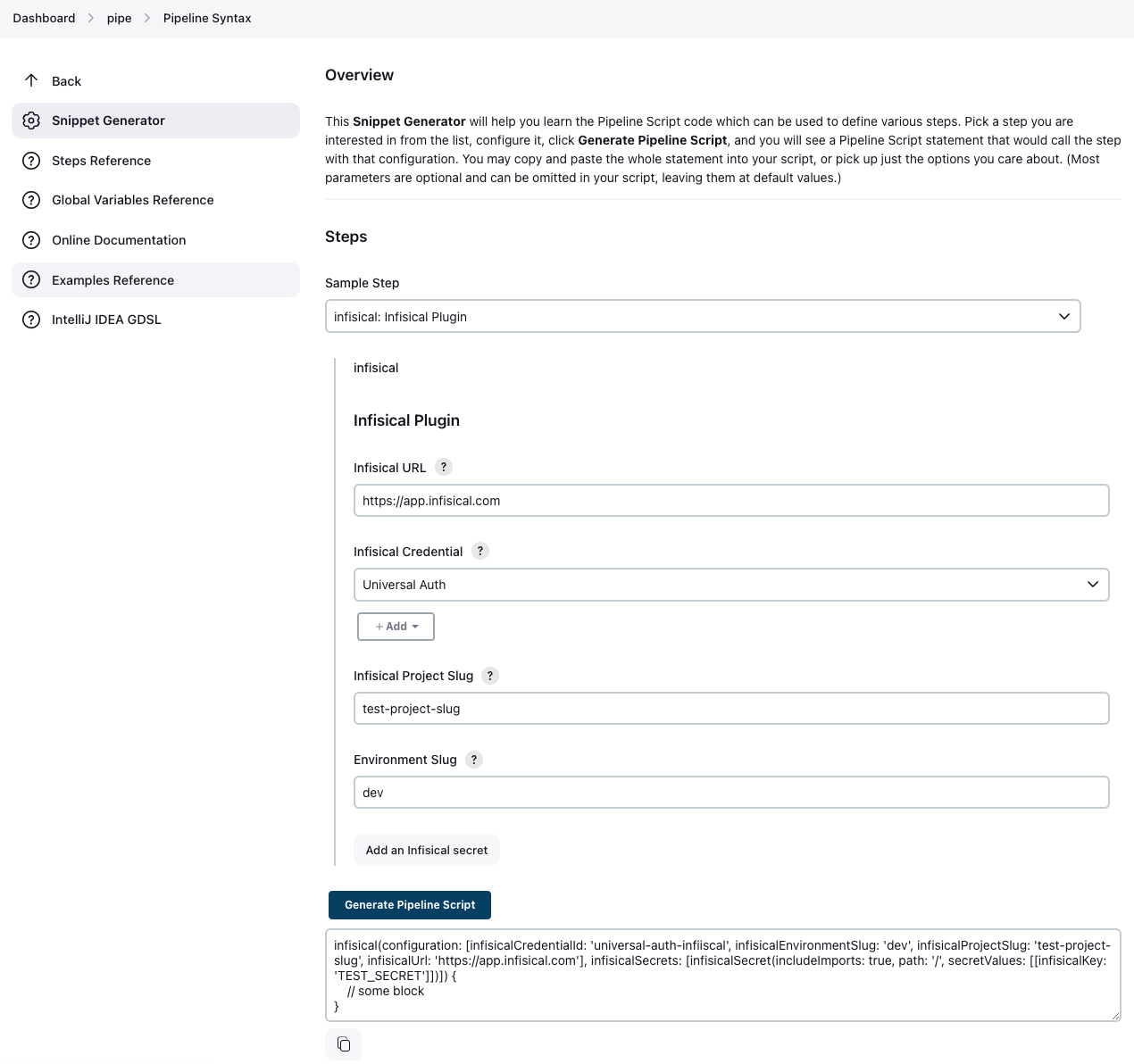Add Infisical Service Token to Jenkins
After setting up your project in Infisical and installing the Infisical CLI to the environment where your Jenkins builds will run, you will need to add the Infisical Service Token to Jenkins.To generate a Infisical service token, follow the guide here.
Once you have generated the token, navigate to Manage Jenkins > Manage Credentials in your Jenkins instance.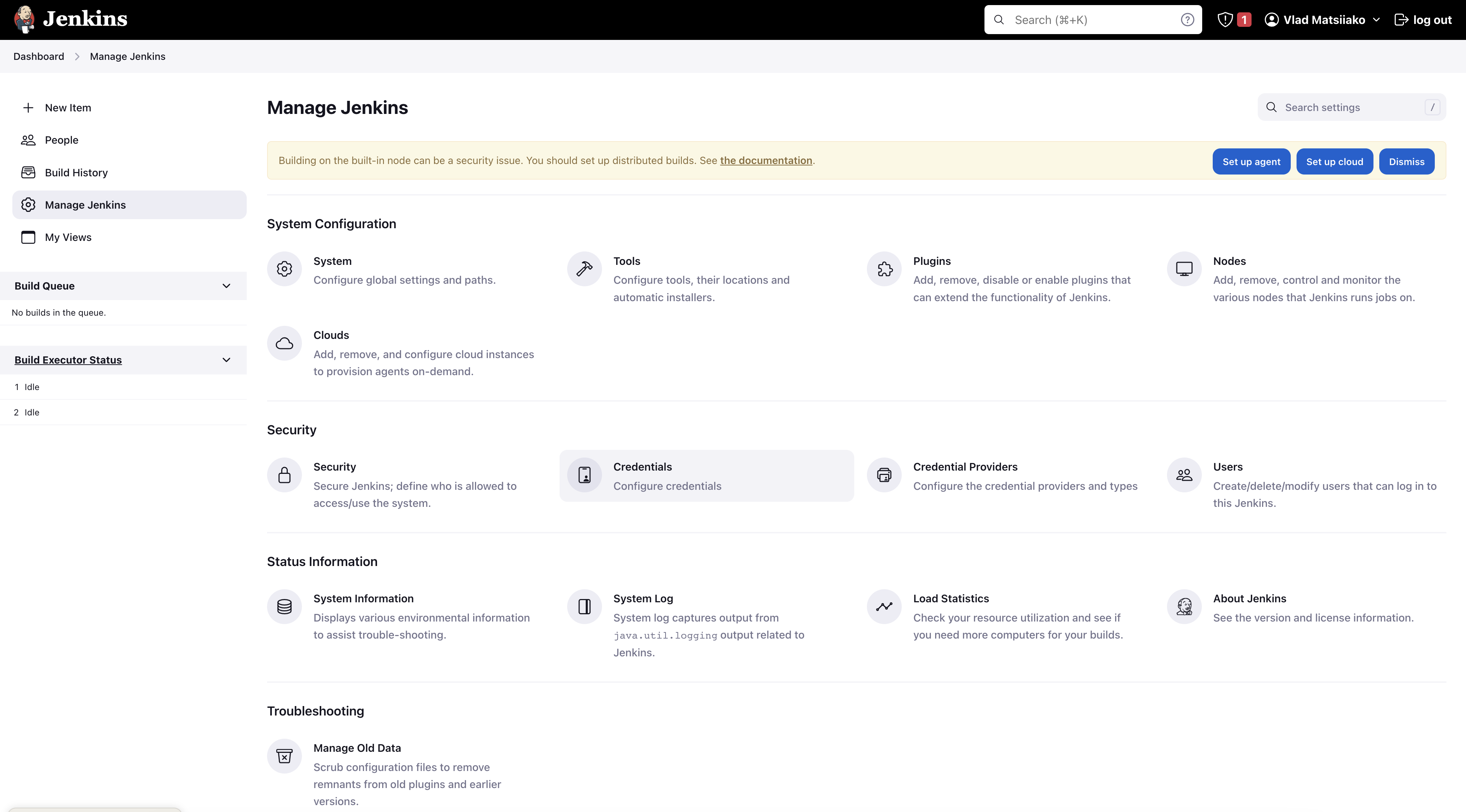 Click on the credential store you want to store the Infisical Service Token in. In this case, we’re using the default Jenkins global store.
Click on the credential store you want to store the Infisical Service Token in. In this case, we’re using the default Jenkins global store.Each of your projects will have a different INFISICAL_TOKEN.
As a result, it may make sense to spread these out into separate credential domains depending on your use case.
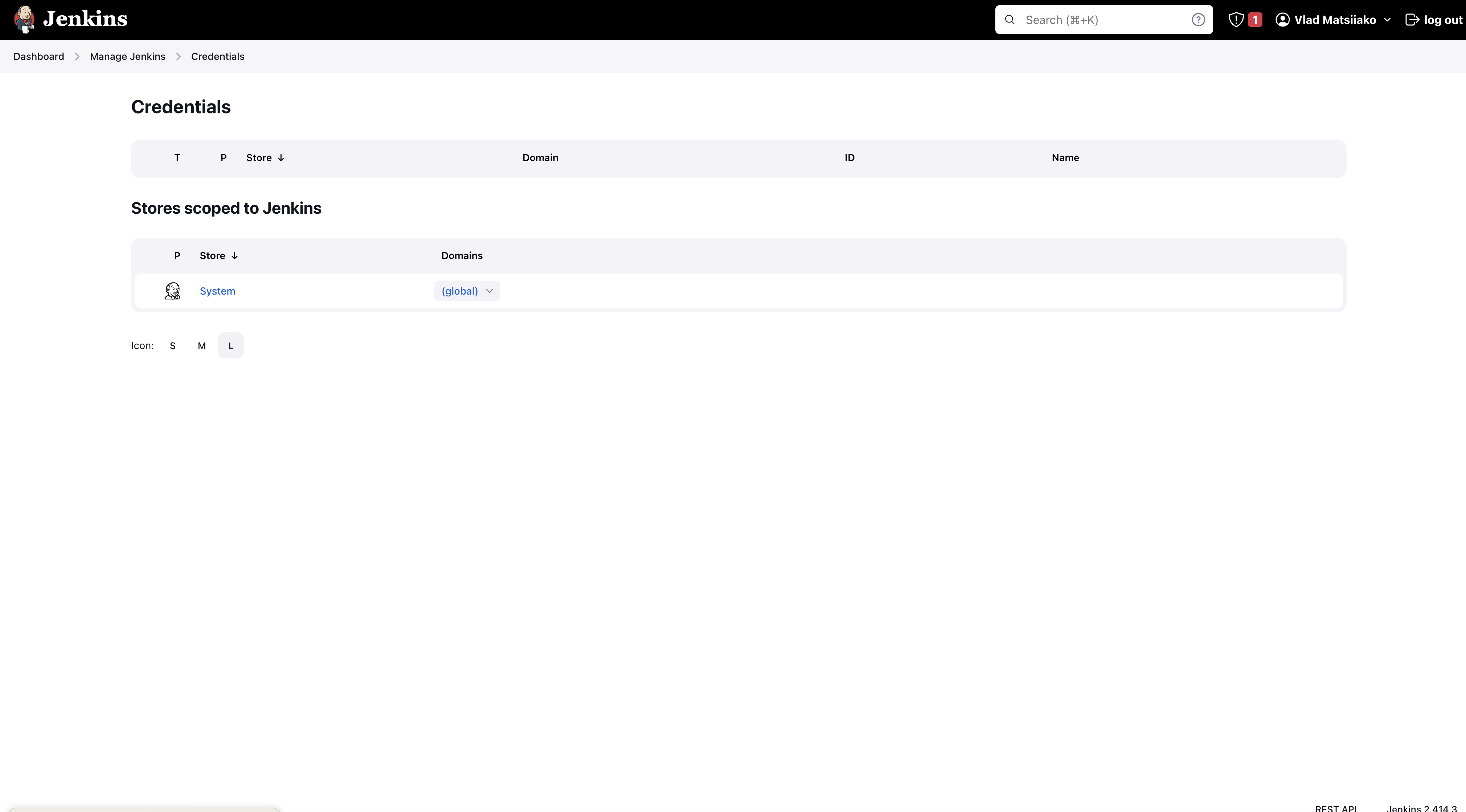 Now, click Add Credentials.
Now, click Add Credentials. Choose Secret text for the Kind option from the dropdown list and enter the Infisical Service Token in the Secret field.
Although the ID can be any value, we’ll set it to
Choose Secret text for the Kind option from the dropdown list and enter the Infisical Service Token in the Secret field.
Although the ID can be any value, we’ll set it to infisical-service-token for the sake of this guide.
The description is optional and can be any text you prefer.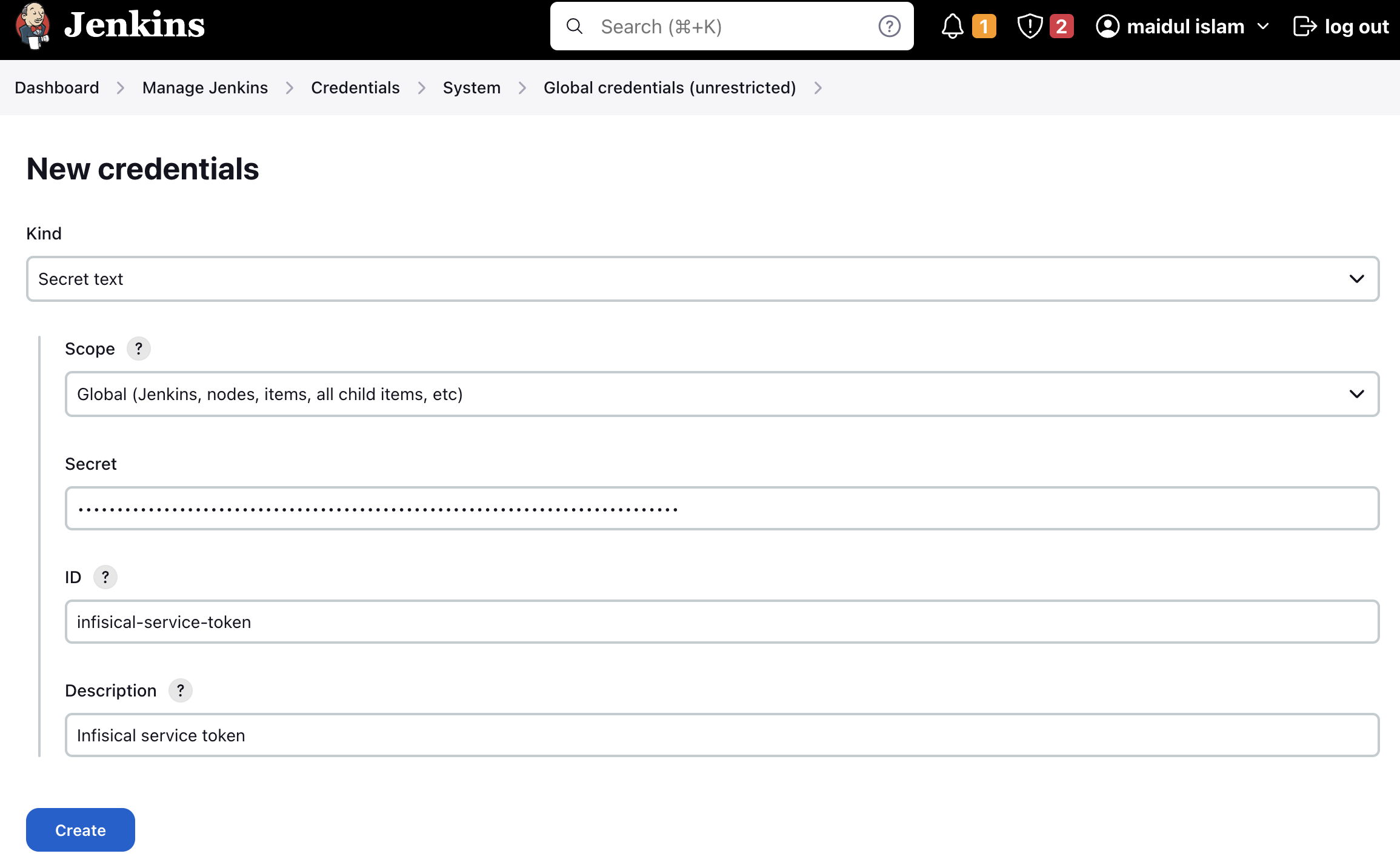 When you’re done, you should see a credential similar to the one below:
When you’re done, you should see a credential similar to the one below: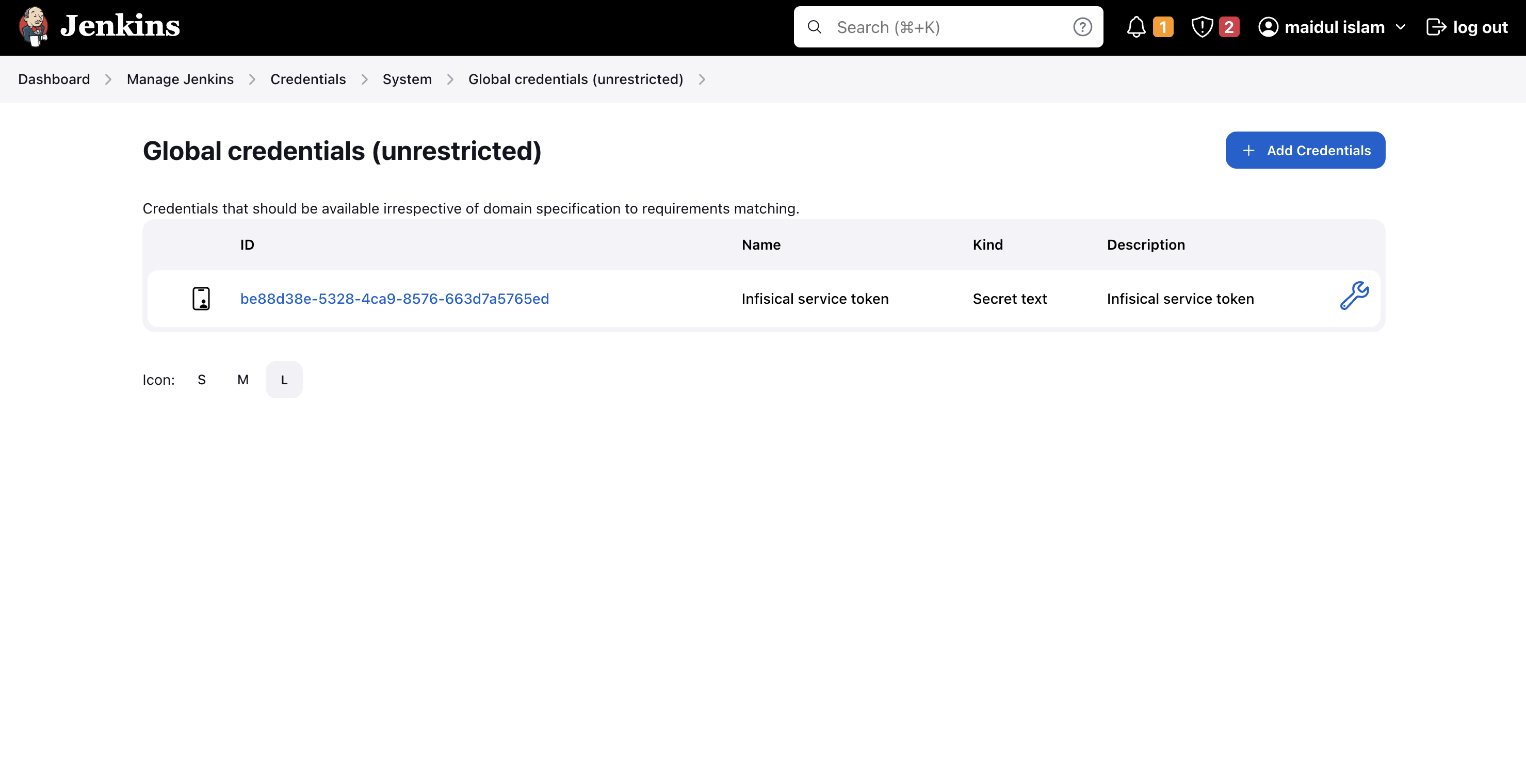
Use Infisical in a Freestyle Project
To fetch secrets with Infisical in a Freestyle Project job, you’ll need to expose the credential you created above as an environment variable to the Infisical CLI.
To do so, first click New Item from the dashboard navigation sidebar: Enter the name of the job, choose the Freestyle Project option, and click OK.
Enter the name of the job, choose the Freestyle Project option, and click OK.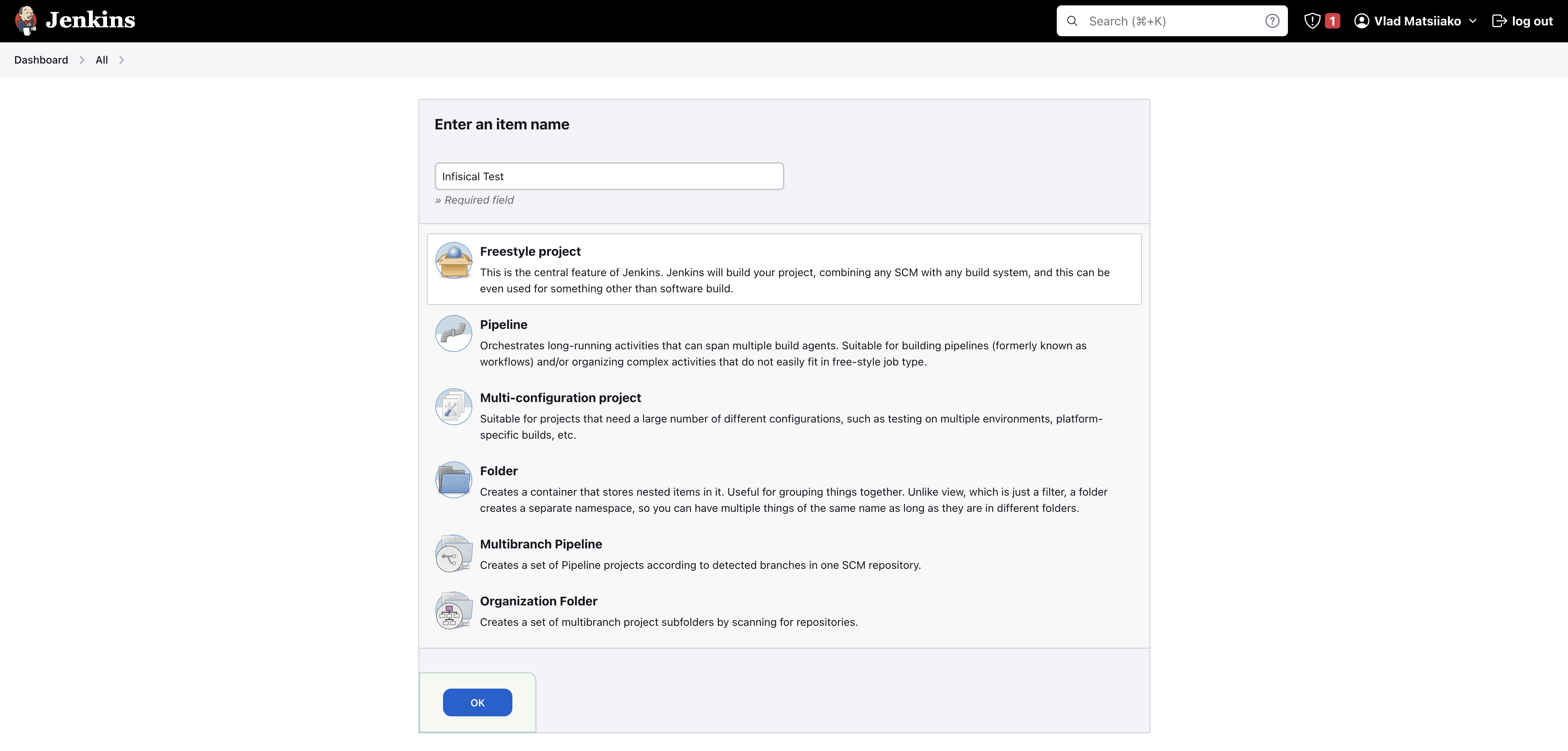 Scroll down to the Build Environment section and enable the Use secret text(s) or file(s) option. Then click Add under the Bindings section and choose Secret text from the dropdown menu.
Scroll down to the Build Environment section and enable the Use secret text(s) or file(s) option. Then click Add under the Bindings section and choose Secret text from the dropdown menu.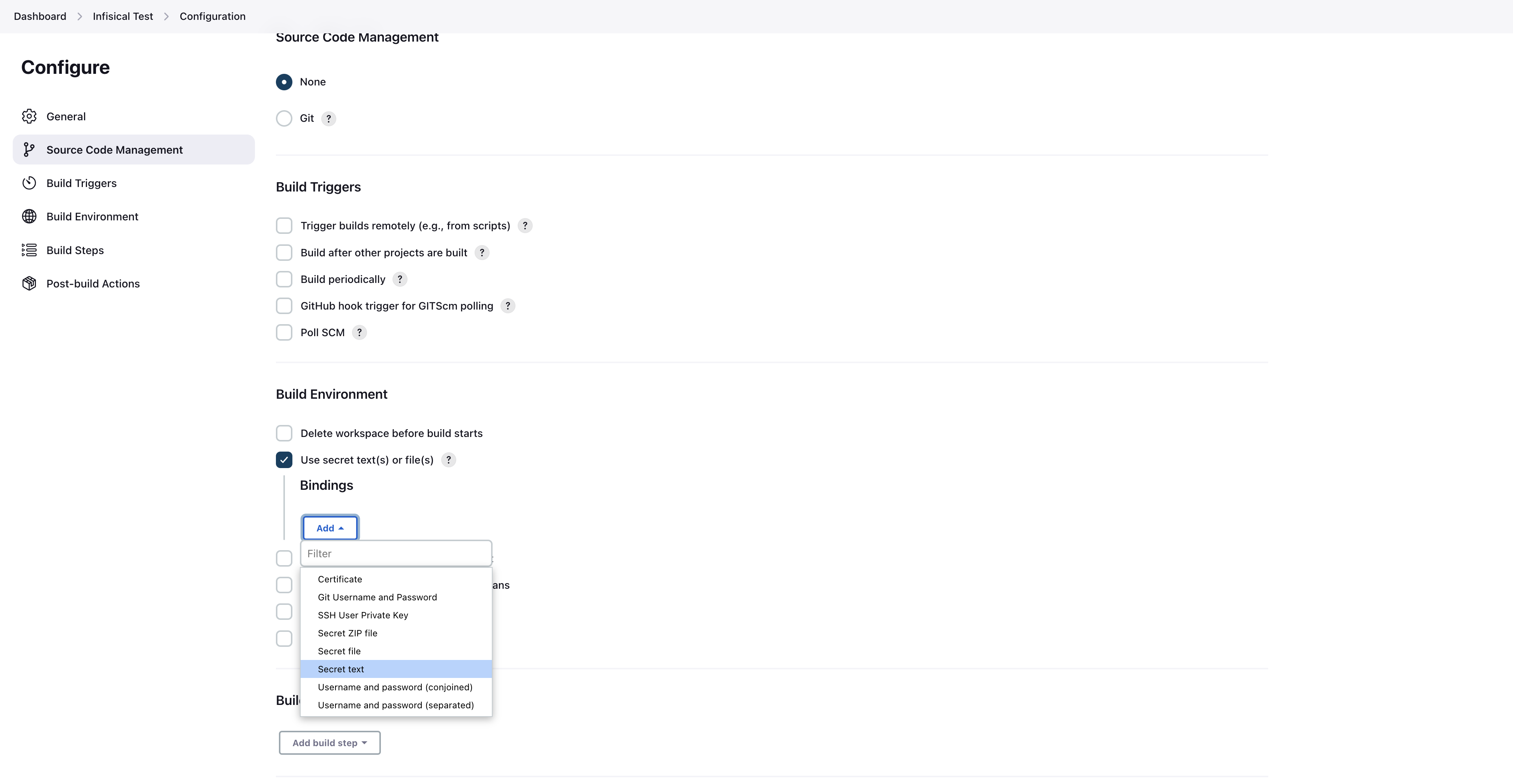 Enter
Enter INFISICAL_TOKEN in the Variable field then click the Specific credentials option from the Credentials section and select the credential you created earlier.
In this case, we saved it as Infisical service token so we’ll choose that from the dropdown menu.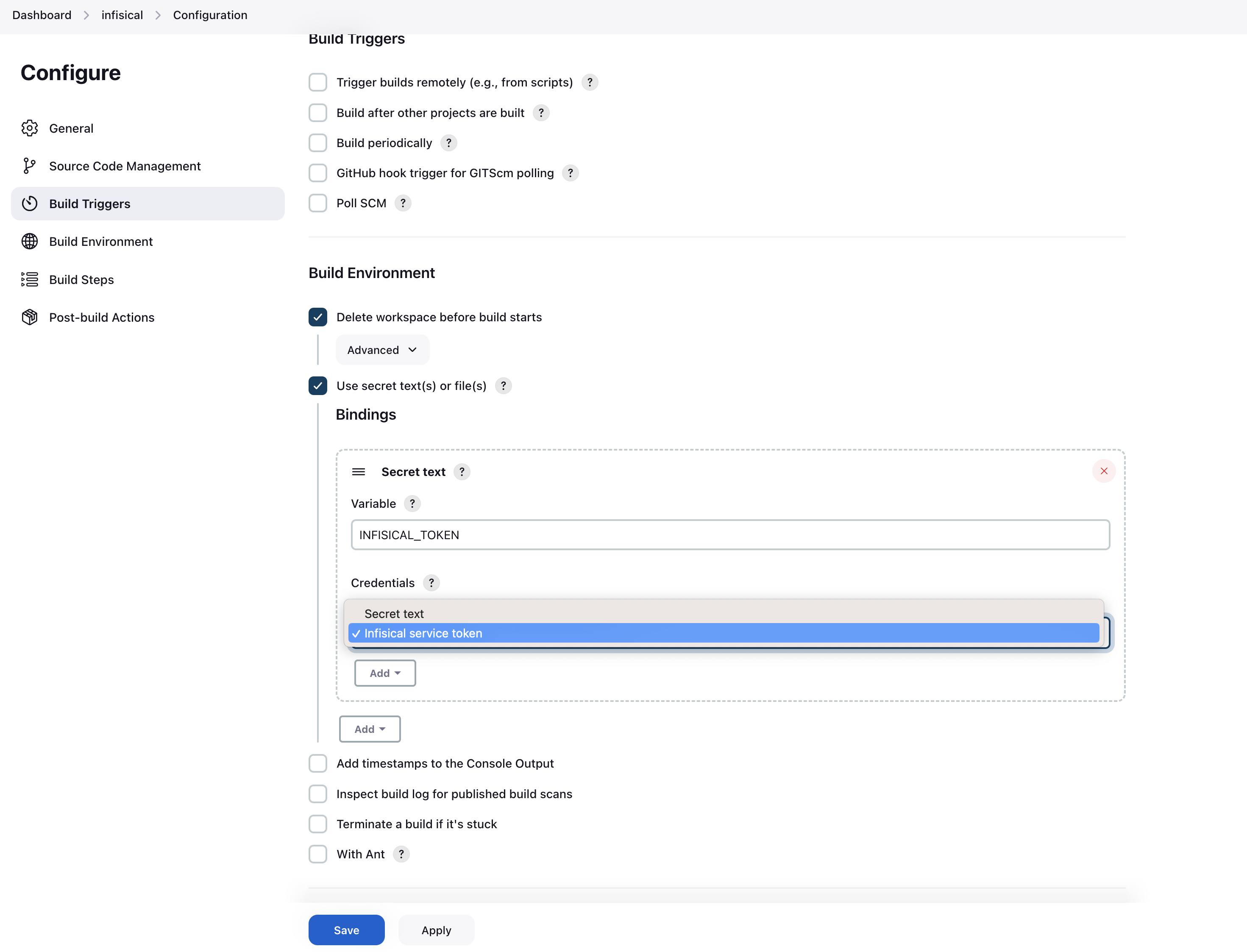 Scroll down to the Build section and choose Execute shell from the Add build step menu.
Scroll down to the Build section and choose Execute shell from the Add build step menu.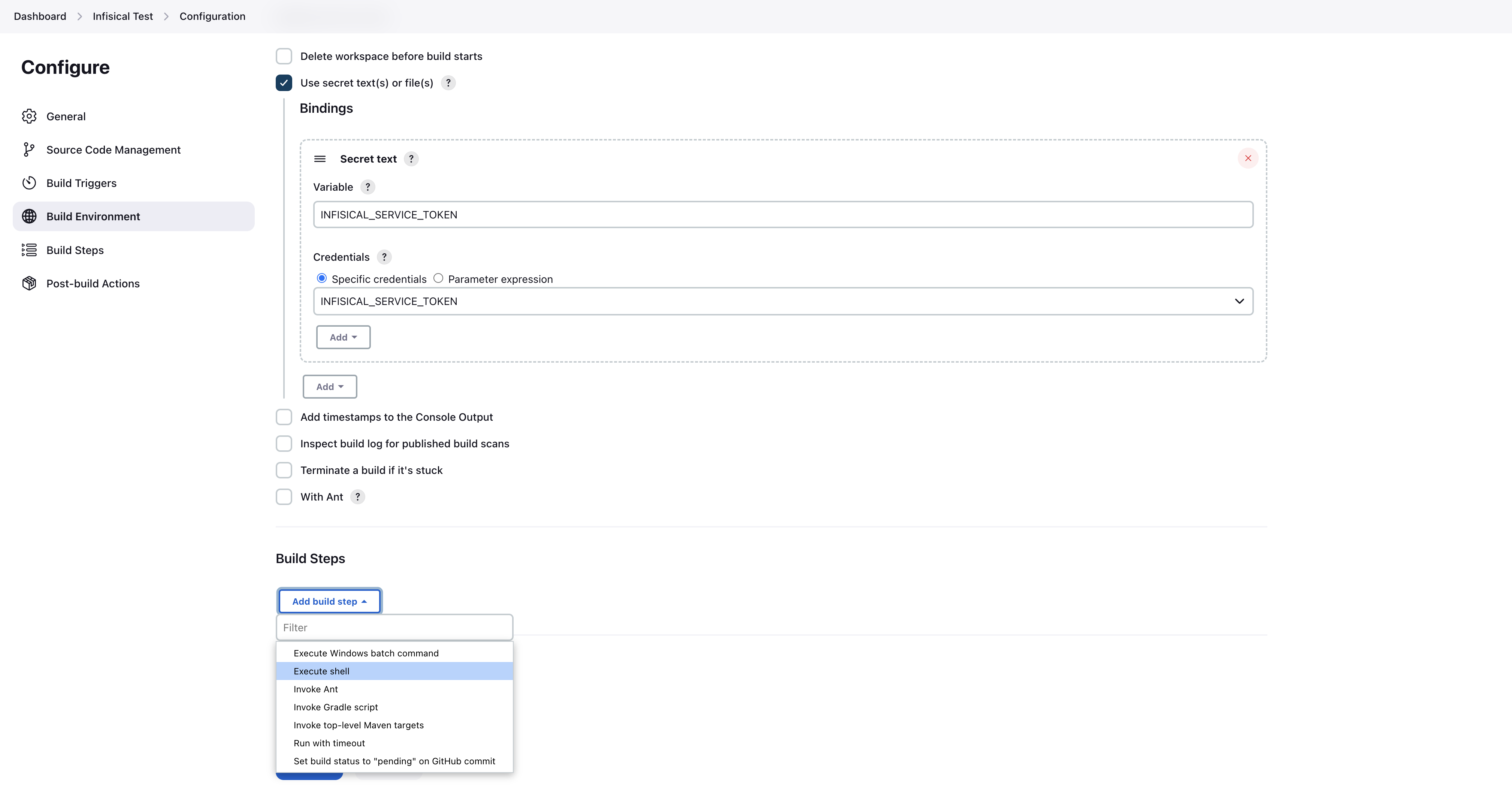 In the command field, you can now use the Infisical CLI to fetch secrets.
The example command below will print the secrets using the service token passed as a credential. When done, click Save.
In the command field, you can now use the Infisical CLI to fetch secrets.
The example command below will print the secrets using the service token passed as a credential. When done, click Save.infisical secrets --env=dev --path=/
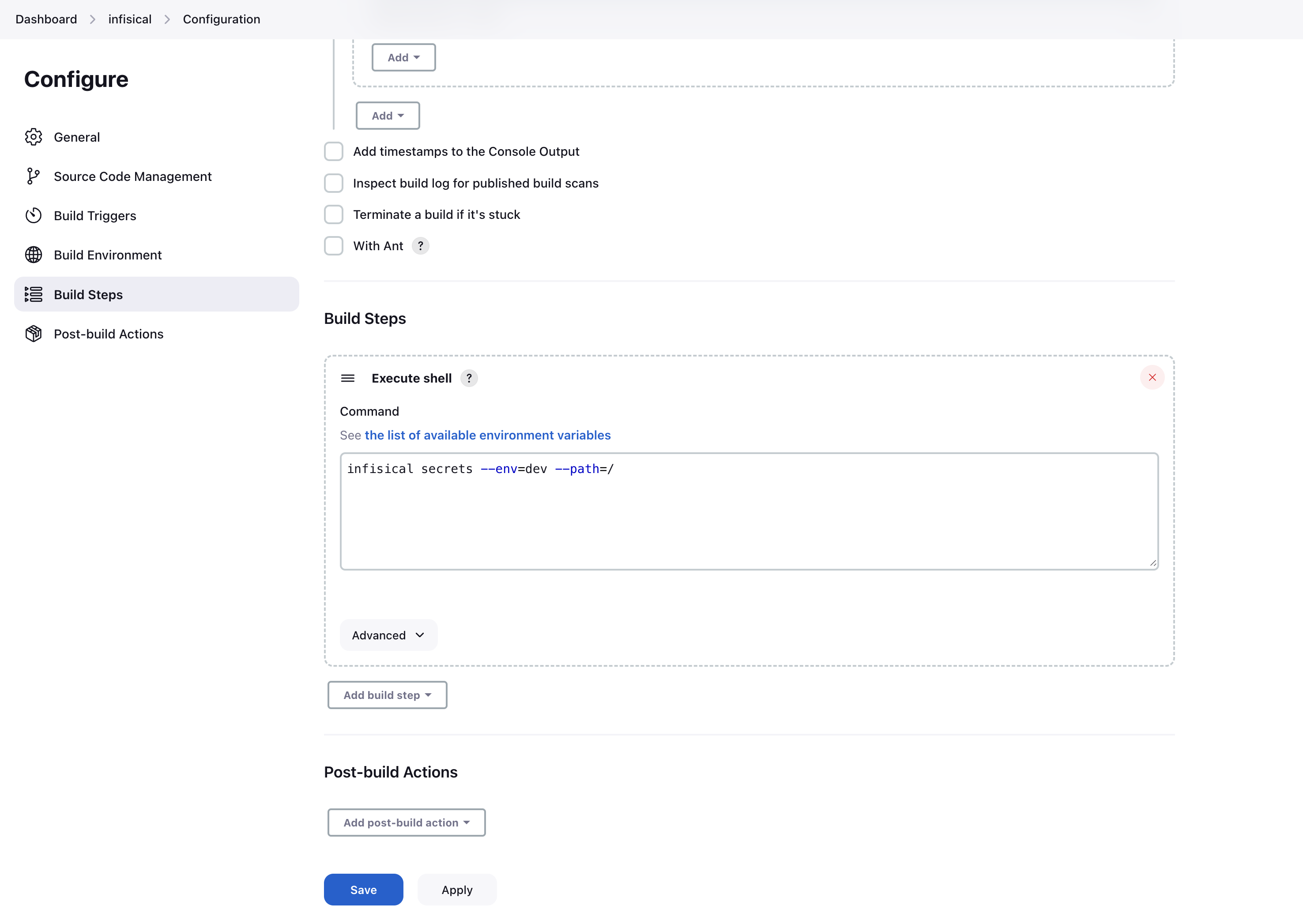 Finally, click Build Now from the navigation sidebar to run your new job.
Finally, click Build Now from the navigation sidebar to run your new job.Use Infisical in a Jenkins Pipeline
To fetch secrets using Infisical in a Pipeline job, you’ll need to expose the Jenkins credential you created above as an environment variable.
To do so, click New Item from the dashboard navigation sidebar: Enter the name of the job, choose the Pipeline option, and click OK.
Enter the name of the job, choose the Pipeline option, and click OK.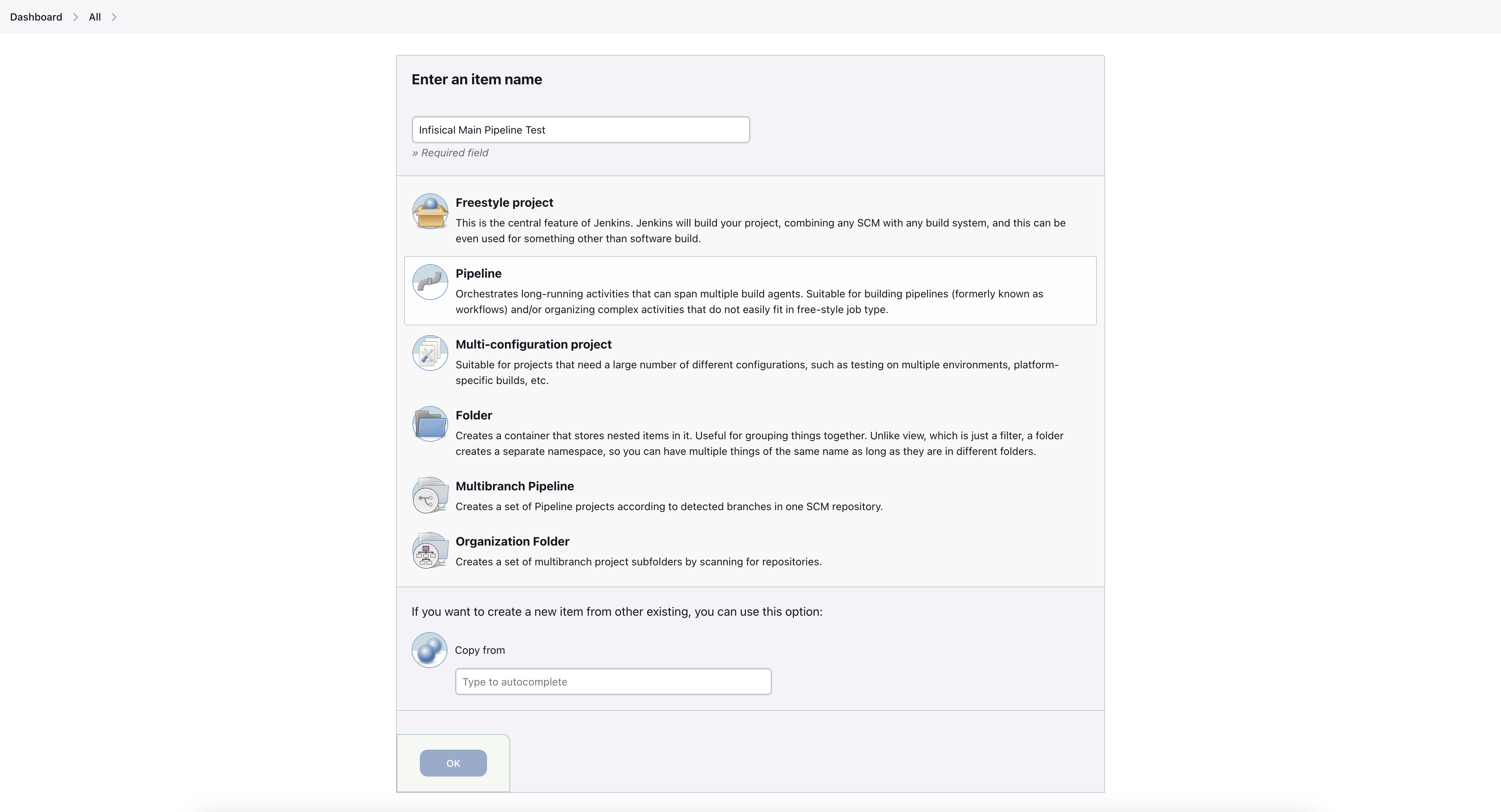 Scroll down to the Pipeline section, paste the following into the Script field, and click Save.
Scroll down to the Pipeline section, paste the following into the Script field, and click Save.pipeline {
agent any
environment {
INFISICAL_TOKEN = credentials('infisical-service-token')
}
stages {
stage('Run Infisical') {
steps {
sh("infisical secrets --env=dev --path=/")
// doesn't work
// sh("docker run --rm test-container infisical secrets")
// works
// sh("docker run -e INFISICAL_TOKEN=${INFISICAL_TOKEN} --rm test-container infisical secrets --env=dev --path=/")
// doesn't work
// sh("docker-compose up -d")
// works
// sh("INFISICAL_TOKEN=${INFISICAL_TOKEN} docker-compose up -d")
}
}
}
}
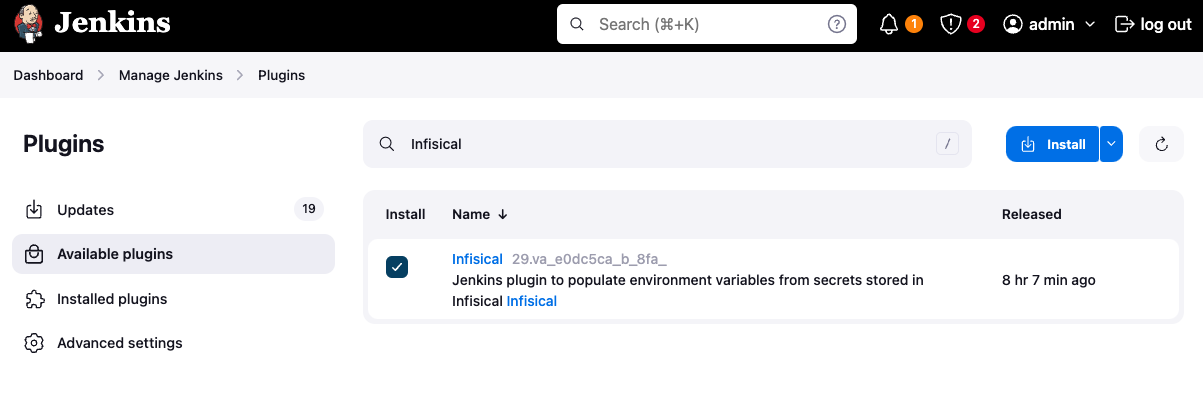
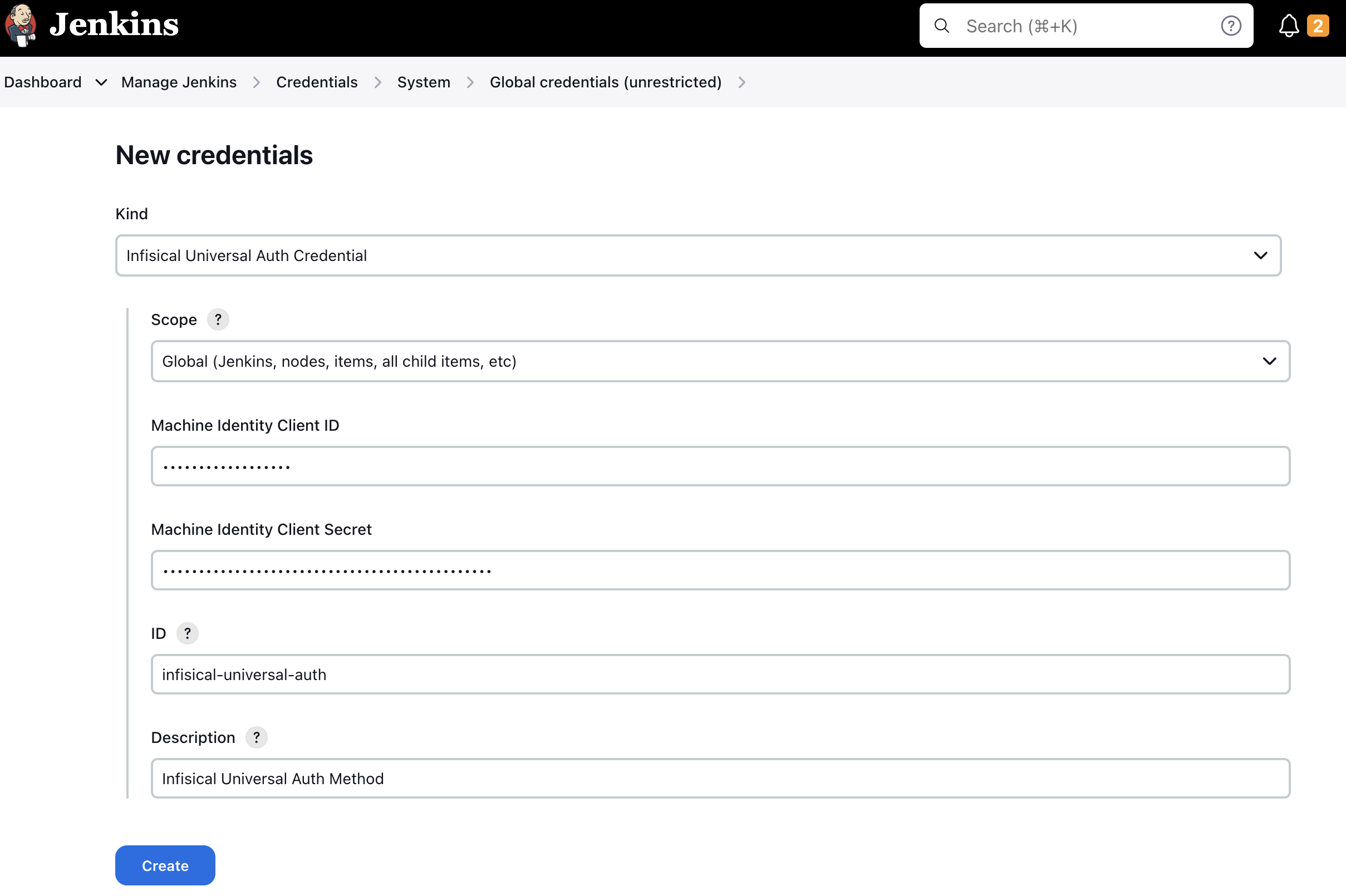
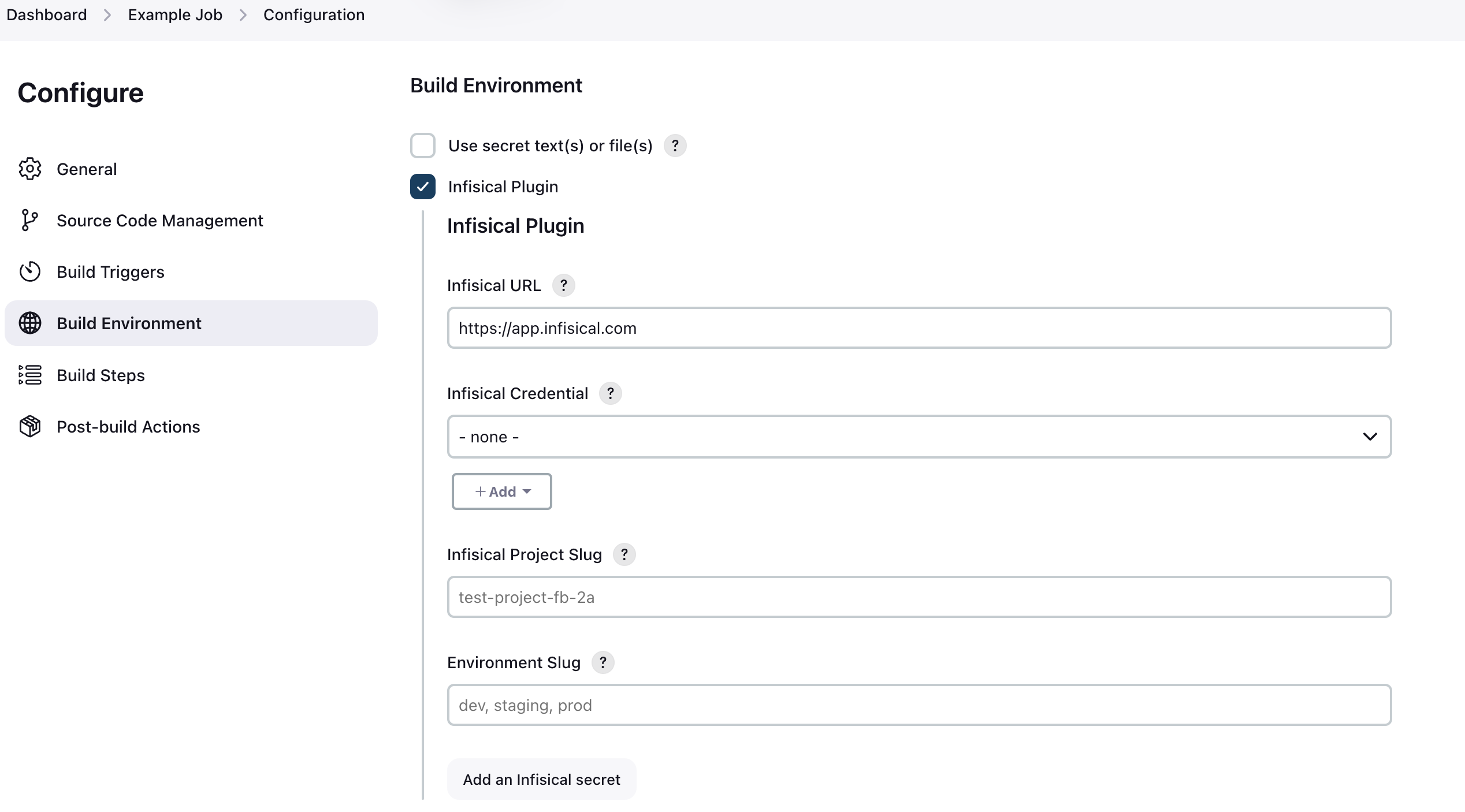 You’ll be prompted with 4 options to fill:
You’ll be prompted with 4 options to fill: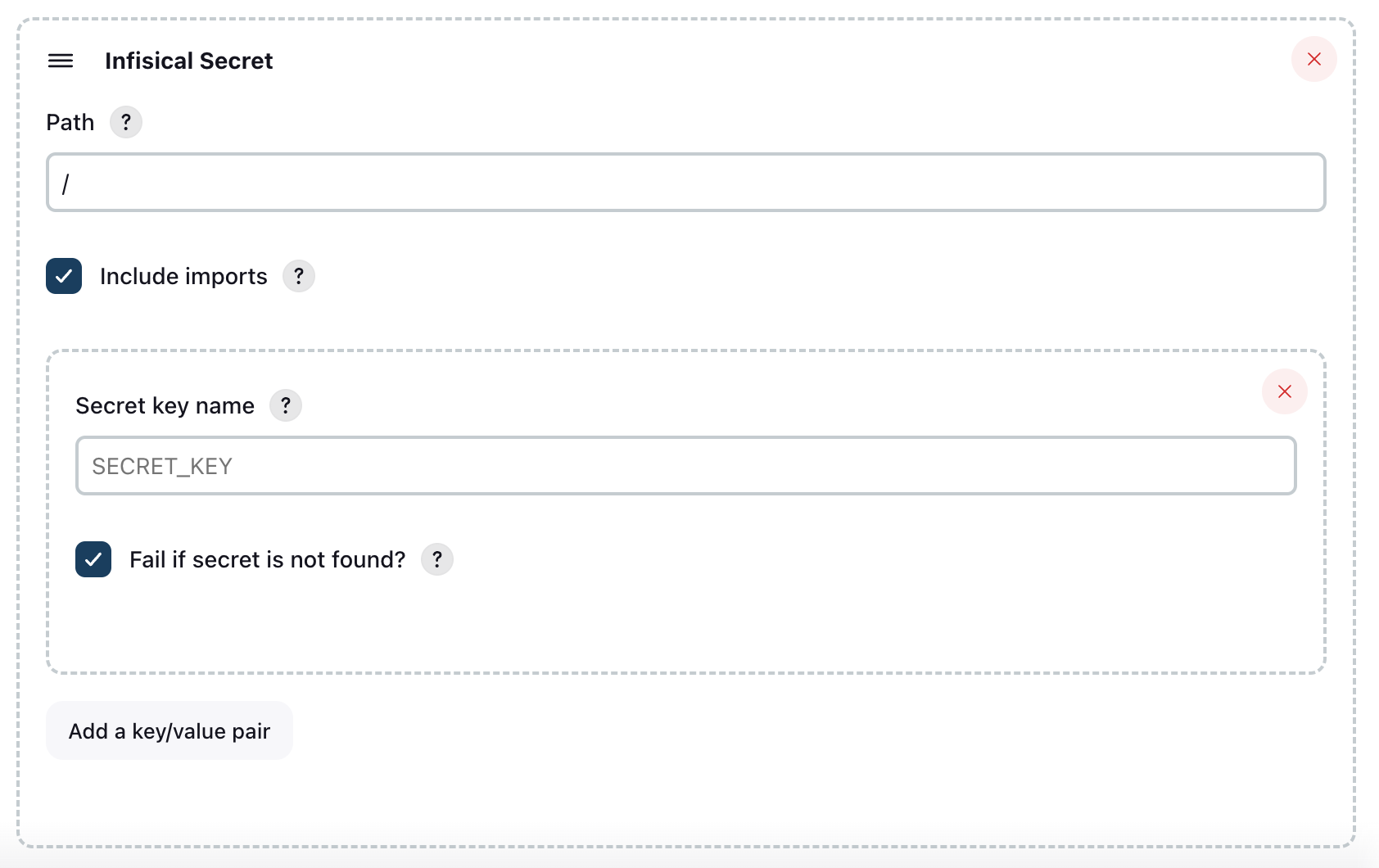 You need to select which secrets that should be pulled into Jenkins.
You start by specifying a folder path from Infisical. The root path is simply
You need to select which secrets that should be pulled into Jenkins.
You start by specifying a folder path from Infisical. The root path is simply 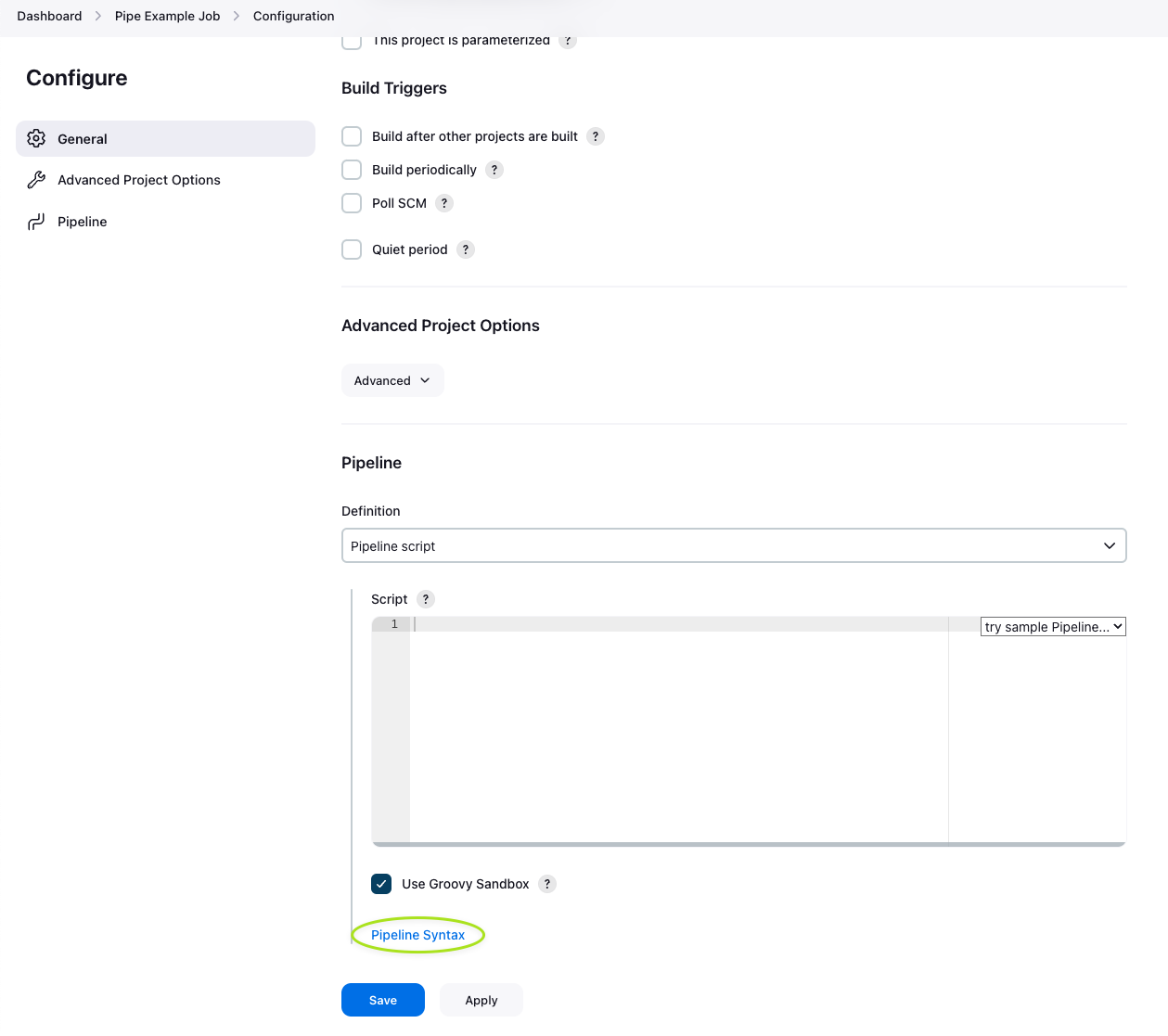 On the Snippet Generator page, simply configure the Infisical Plugin like it’s documented in the Configuration documentation step.Once you have filled out the configuration, press
On the Snippet Generator page, simply configure the Infisical Plugin like it’s documented in the Configuration documentation step.Once you have filled out the configuration, press 